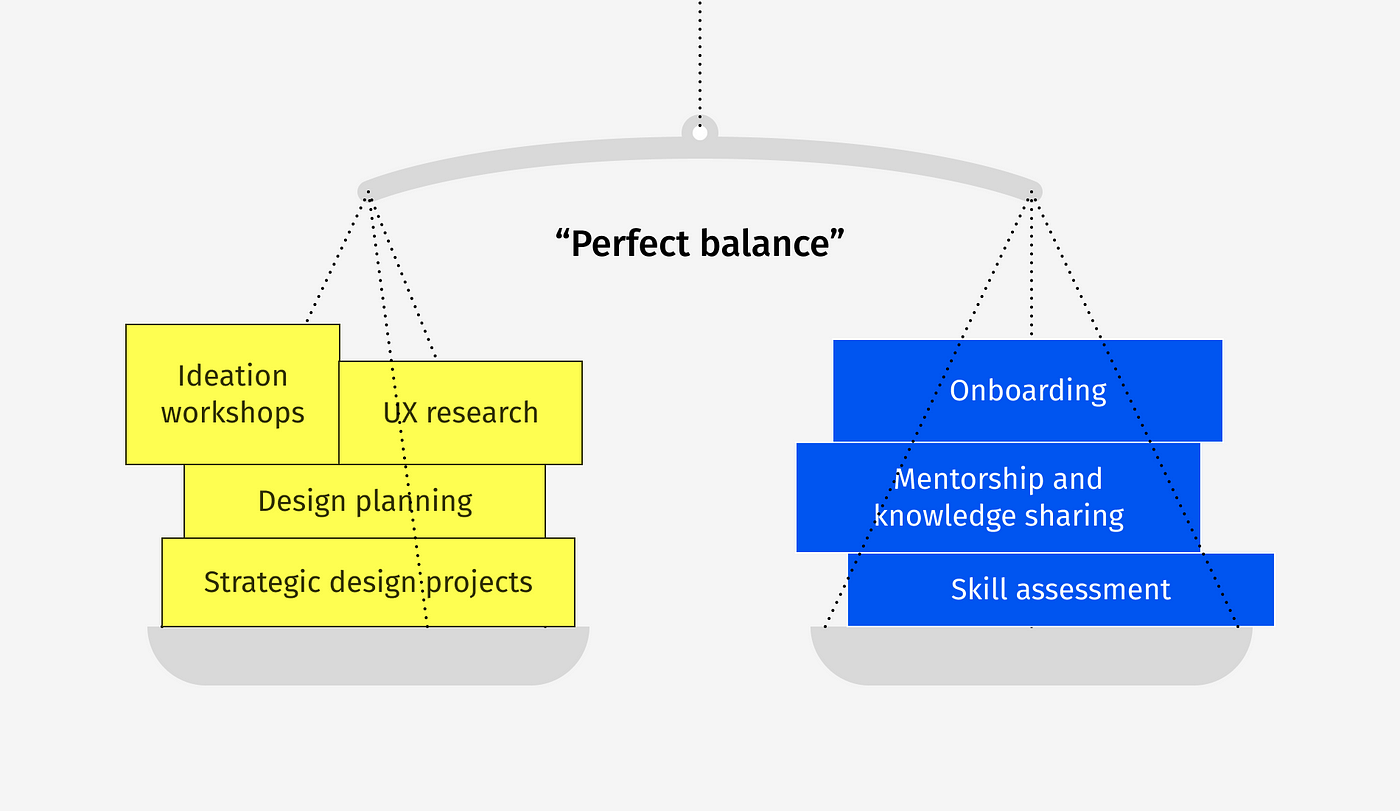Did you know that some day traders have mastered the art of multitasking so well that they can trade while cooking dinner? Balancing day trading with other responsibilities is no small feat, but it's entirely possible with the right strategies and tools. In this article, we explore how you can successfully manage day trading alongside a full-time job and family life. We'll discuss time allocation, prioritization, and effective scheduling, while also highlighting the risks involved. With insights from DayTradingBusiness, learn how to minimize distractions, leverage technology, and set realistic goals, all while reaping the benefits of a well-rounded approach to trading. Get ready to find that sweet spot between trading and your everyday commitments!
How Can I Balance Day Trading with a Full-Time Job?
To balance day trading with a full-time job, set a strict schedule. Allocate specific hours for trading, ideally during peak market times that fit your work breaks. Use tools like alerts and automated trading to manage trades without constant monitoring. Prioritize tasks; keep detailed records to analyze performance efficiently. Consider part-time trading or swing trading if day trading proves too demanding. Stay disciplined and avoid overtrading to maintain focus on your job.
What Strategies Help Manage Day Trading and Family Life?
1. Set a Schedule: Allocate specific hours for trading and family time to create clear boundaries.
2. Prioritize Tasks: Focus on high-impact trading strategies that require less time, allowing for more family engagement.
3. Use Technology: Leverage trading apps and alerts to stay updated without being glued to your screen.
4. Communicate: Keep your family informed about your trading schedule and goals to foster understanding and support.
5. Designate a Workspace: Create a dedicated trading area to minimize distractions and separate work from home life.
6. Take Breaks: Use breaks for family interactions to maintain a healthy balance and avoid burnout.
7. Involve Family: Share your trading journey with family members; their interest can enhance your support system.
8. Limit Trading Days: Consider trading only on certain days of the week to free up more time for family activities.
9. Practice Mindfulness: Stay focused and calm while trading to make quick, effective decisions without added stress.
10. Reflect Regularly: Assess your trading results and family time to ensure neither is compromised.
How Much Time Should I Allocate for Day Trading Daily?
Allocate 2 to 4 hours daily for day trading. This includes time for research, analysis, and executing trades. Ensure you also set aside time for other responsibilities by scheduling your trading sessions during market hours that align with your availability. Prioritize focus and avoid multitasking to maximize your efficiency in both trading and personal commitments.
What Tools Can Assist in Balancing Day Trading and Other Commitments?
To balance day trading with other commitments, consider using these tools:
1. Trading Apps: Platforms like Robinhood or TD Ameritrade allow for quick trades on the go.
2. Calendar Tools: Google Calendar helps schedule trading sessions and reminders for market openings.
3. Alerts and Notifications: Set up price alerts on apps like TradingView to stay informed without constant monitoring.
4. Time Management Apps: Tools like Trello or Todoist can help prioritize tasks and manage daily responsibilities.
5. Automated Trading Systems: Use bots or algorithms that execute trades based on your strategies while you focus on other commitments.
These tools can streamline your day trading efforts, making it easier to juggle multiple responsibilities effectively.
How Do I Prioritize Day Trading Among My Other Responsibilities?

To prioritize day trading among other responsibilities, first, set specific trading hours that align with your schedule. Block out these times in your calendar to ensure you’re focused. Next, create a daily plan that outlines your trading goals and tasks, minimizing distractions during trading hours. Use tools like alerts or automated trading to manage trades efficiently while handling other responsibilities. Finally, assess and adjust your routine regularly to maintain balance and ensure that trading fits seamlessly into your life.
Can I Day Trade Part-Time Successfully?
Yes, you can day trade part-time successfully. Focus on a few key strategies:
1. Set a Schedule: Choose specific hours for trading that fit around your other responsibilities.
2. Use a Trading Plan: Create a solid plan with clear entry and exit strategies to maximize efficiency during your limited trading time.
3. Focus on Fewer Stocks: Concentrate on a few stocks or ETFs to monitor closely, reducing the complexity of your trades.
4. Stay Informed: Keep up with market news and trends relevant to your chosen stocks to make informed decisions quickly.
5. Practice Risk Management: Use stop-loss orders and only risk a small percentage of your capital on each trade to protect your investments.
By implementing these strategies, you can effectively balance day trading with your other commitments.
What Are the Best Times to Day Trade with a Busy Schedule?
The best times to day trade with a busy schedule are typically during the market’s opening hours, around 9:30 AM to 11:00 AM EST, and the last hour before closing, from 3:00 PM to 4:00 PM EST. These periods often see the highest volatility and trading volume, which can create better opportunities. If your schedule allows, consider dedicating 30 minutes before and after your main commitments to monitor the market. Use tools like alerts and mobile trading apps to stay updated throughout the day. Prioritize your trades and set clear goals to maximize efficiency.
How Can I Stay Disciplined in Day Trading While Juggling Responsibilities?
To stay disciplined in day trading while managing other responsibilities, set a strict schedule that outlines your trading hours and stick to it. Prioritize your trading tasks by using a checklist to ensure you focus on key strategies. Limit distractions by creating a dedicated trading space and using tools like timers for focused sessions. Incorporate breaks to recharge and avoid burnout. Set realistic profit goals and review your performance regularly to adjust your strategies. Finally, communicate your schedule with family or colleagues to minimize interruptions.
What Are the Risks of Day Trading While Managing Other Duties?
Day trading while managing other duties can lead to significant risks, including:
1. Time Constraints: Juggling day trading with work or family can result in missed opportunities or poor decision-making due to distractions.
2. Emotional Stress: Managing multiple responsibilities can heighten stress, leading to impulsive trades or emotional reactions that compromise your strategy.
3. Lack of Focus: Divided attention may prevent you from effectively analyzing market conditions, increasing the likelihood of losses.
4. Regulatory Compliance: Failing to monitor trades closely can lead to violations of trading regulations, resulting in fines or account restrictions.
5. Financial Risks: Inadequate risk management due to multitasking can amplify losses, impacting your financial health.
To balance day trading with other responsibilities, prioritize time management, set clear trading hours, and maintain a disciplined approach to trading strategies.
How Can I Create a Day Trading Schedule That Fits My Life?

To create a day trading schedule that fits your life, start by identifying your peak hours of focus and energy. Block out those times for trading, ensuring you’re alert and free from distractions. Next, your daily responsibilities—work, family, and personal time—and allocate specific trading hours around them. Use a planner or digital calendar to visualize your schedule.
Limit your trading sessions to a few hours each day to avoid burnout. Consider setting alerts for key market movements rather than being glued to the screen. Stay flexible; if your responsibilities shift, adapt your trading times accordingly. Prioritize quality over quantity in your trades to maintain balance with your other commitments.
Learn about How to Create a Day Trading Checklist
What Role Does Technology Play in Balancing Day Trading?
Technology plays a crucial role in balancing day trading with other responsibilities by providing tools that streamline trading processes. Trading platforms offer real-time data, automated trading options, and alerts, allowing traders to make informed decisions quickly. Mobile apps enable traders to monitor markets and execute trades on the go, facilitating better time management. Additionally, tools like calendar integrations and task reminders help traders schedule their day effectively, ensuring they can juggle trading with personal and professional commitments. Overall, technology enhances efficiency, allowing for a more balanced approach to day trading.
How Can I Minimize Distractions While Day Trading?
To minimize distractions while day trading, create a dedicated trading environment free from interruptions. Set specific trading hours and communicate them to others to limit disturbances. Use noise-canceling headphones or soft music to enhance focus. Turn off non-essential notifications on your devices. Keep your workspace organized and clutter-free to maintain clarity. Prioritize your tasks by creating a daily trading plan, which helps you stay on track and manage your responsibilities effectively. Lastly, take scheduled breaks to refresh your mind without losing your trading momentum.
How Can You Effectively Balance Day Trading with Other Responsibilities?

Day trading involves buying and selling financial instruments within the same trading day. To balance day trading with other responsibilities, set specific trading hours, create a structured schedule, prioritize tasks, and limit distractions. Use tools for automated alerts and analysis to maximize efficiency in both trading and daily life.
Learn more about: What is Day Trading?
What Should I Do When Day Trading Conflicts with Family Events?
When day trading conflicts with family events, prioritize your family commitments. Consider scheduling your trading around those events by choosing specific hours or days for trading. Communicate with your family about your trading schedule to ensure they understand your commitment. If possible, set alerts or use automated trading to manage trades without constant attention. Lastly, be flexible; if a major family event arises, take a break from trading to focus on your loved ones.
How Can I Set Realistic Goals for Day Trading Alongside Other Tasks?
To set realistic goals for day trading while managing other tasks, first assess your available time. Identify specific hours you can dedicate to trading without distractions. Next, set achievable daily profit targets based on your experience and market conditions. Use tools like a trading journal to track your progress and adjust your goals as needed. Prioritize tasks by creating a daily schedule that includes both trading and your other responsibilities, ensuring you allocate focused time for each. Finally, stay flexible; be prepared to adapt your trading goals based on your overall workload and personal commitments.
Learn about How to Set Realistic Goals in Day Trading
What Are the Benefits of Balancing Day Trading with Other Life Aspects?
Balancing day trading with other life aspects helps prevent burnout, maintain mental clarity, and improve decision-making. It allows for better emotional management, reducing stress from trading pressures. Engaging in hobbies or family time fosters a healthier mindset, leading to more disciplined trading. Diverse experiences can enhance creativity and strategy in trading. Establishing this balance also ensures you meet personal responsibilities, creating a more fulfilling life overall.
How Can I Learn to Day Trade Efficiently with Limited Time?
To learn day trading efficiently with limited time, focus on these steps:
1. Set a Schedule: Dedicate specific hours for trading and study. Early mornings or evenings can work well.
2. Use Simulators: Practice with trading simulators to build skills without financial risk.
3. Prioritize Education: Invest in quality resources like books, courses, and webinars that fit your time constraints.
4. Follow Market Trends: Stay updated on market news and trends through apps or newsletters that provide quick insights.
5. Trade Selectively: Focus on a few stocks or instruments to minimize analysis time and maximize familiarity.
6. Create a Trading Plan: Develop a clear strategy outlining entry and exit points, risk management, and goals.
7. Review and Adjust: Regularly analyze your trades and strategies to improve efficiency.
8. Limit Distractions: Use tools and apps to manage your time and maintain focus during trading hours.
By implementing these strategies, you can balance day trading with other responsibilities effectively.
Conclusion about How to Balance Day Trading with Other Responsibilities
Balancing day trading with other responsibilities is crucial for both financial success and personal well-being. By implementing effective strategies, utilizing technology, and setting realistic goals, you can successfully navigate the demands of trading alongside a full-time job or family obligations. Remember, discipline and prioritization are key to achieving a harmonious balance. For more in-depth guidance and support on trading efficiently, consider the resources available through DayTradingBusiness.